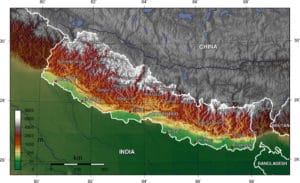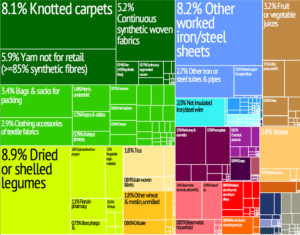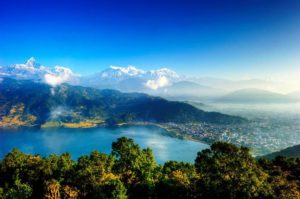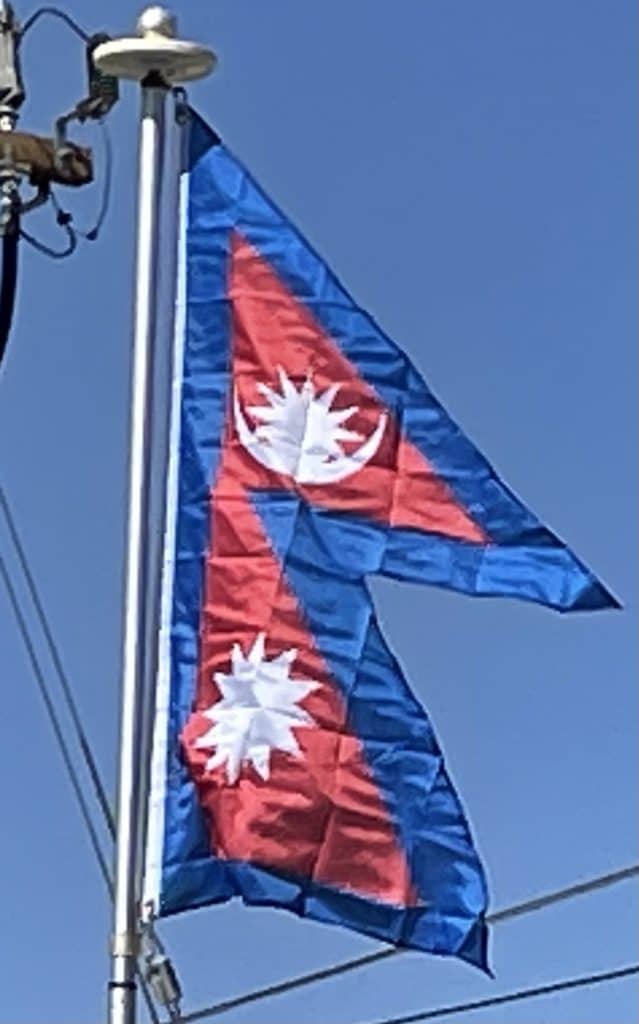
Nepal occupies the central sector of the Himalayan arc, nearly one-third of the 2,400 km (1,500 mi)-long Himalayas, with a small strip of southernmost Nepal stretching into the Indo-Gangetic plain and two districts in the northwest stretching up to the Tibetan plateau.
Economy:
Nepal’s gross domestic product (GDP) for 2018 was estimated at $28.8 billion. With an annual growth rate calculated at 6.3% in 2018, and expected to reach 7.1% in 2019, Nepal is one of the fastest-growing economies in the world. However, the country ranks 165th in the world in nominal GDP per capita and 162nd in GDP per capita at PPP. Nepal has been a member of WTO since 23 April 2004.

Nepal’s foreign exchange remittances of US$8.1 billion in 2018, the 19th largest in the world and constituting 28.0% of GDP, were contributed to its economy by millions of workers primarily in India, the middle east and East Asia, almost all of them unskilled labourers.
Major agricultural products include cereals (barley, maize, millet, paddy and wheat), oilseed, potato, pulses, sugarcane, jute, tobacco, milk and water buffalo meat. Major industries include tourism, carpets, textiles, cigarettes, cement, brick, as well as small rice, jute, sugar and oilseed mills. ajor exports include readymade garment, carpet, pulses, handicrafts, leather, medicinal herbs, and paper products, which account for 90% of the total. Major imports include various finished and semi-finished goods, raw materials, machinery and equipment, chemical fertilizers, electrical and electronic devices, petroleum products, gold, and readymade garments.
Tourism is one of the largest and fastest-growing industries in Nepal, employing more than a million people and contributing 7.9% of the total GDP.

The number of international visitors crossed one million in 2018 for the first time (not counting Indian tourists arriving by land). Premier destinations include Pokhara, the Annapurna trekking circuit and the four UNESCO world heritage sites—Lumbini, Sagarmatha National Park (home to Mount Everest), seven sites in the Kathmandu Valley collectively listed as one, and Chitwan National Park. Most of Nepal’s mountaineering earning comes from Mount Everest, which is more accessible from the Nepalese side.
Nepal, officially opened to westerners in 1951, became a popular destination at the end of the hippie trail, during the 1960s and 1970s. The industry, disrupted by the civil war in the 1990s, has since recovered but faces challenges to growth, owing to a lack of proper facilities for high-end tourism termed the “infrastructure bottleneck”, the flag carrier in shambles, and a handful of destinations properly developed and marketed. The home-stay tourism, in which cultural and eco-tourists stay as paying guests in the homes of indigenous people, has seen some success.
Transportation:
Nepal remains isolated from the world’s major land, air and sea transport routes, although, within the country, aviation is in a better state, with 47 airports, 11 of them with paved runways; flights are frequent and support a sizeable traffic. The hilly and mountainous terrain in the northern two-thirds of the country has made the building of roads and other infrastructure difficult and expensive. As of 2016, there were just over 11,890 km (7,388 mi) of paved roads, 16,100 km (10,004 mi) of unpaved roads, and just 59 km (37 mi) of railway line in the south. As of 2018, all district headquarters (except Simikot) had been connected to the road network. Most of the rural roads are not operable during the rainy season; even national highways regularly become inoperable.
